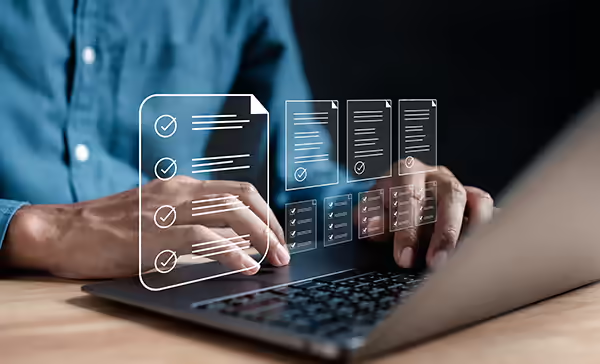Many business owners, whether small, medium or large, understand they need digital marketing, but simply don’t know where to get started in terms of digital marketing channels or how to scale up existing digital marketing efforts to achieve business growth.
For SMEs that have already had success, offline marketing is sure to have played a part in the past. But digital marketing is still new to many business owners, and how to promote or further grow your business through online marketing can prove difficult.
We have put together a quick guide to help business owners promote their business through digital marketing, and achieve the business growth they are looking for.
Web design and development
Whether you’re looking to sell online or simply generate leads through your website, having a thoroughly thought-out website design and build is key to online success.
You can put all the time and money into your marketing – but if your website is hard to use, broken, or overly complicated, you’re likely to be wasting your money.
A results-driven website design is absolutely essential for your overall digital marketing strategy to succeed, and should be the first thing you focus on in developing your online presence.
All your marketing activity will revolve around driving relevant, targeted traffic to your website in hope of generating sales or leads, so the design and development of your site should appeal to your target audience to help nurture them into converting.
While a “great-looking” site is often the focus for many website designers out there, the results are what matters when it comes to a business website. So while one method may be the best “looking” route to go down, if it’s not a design choice that will lead to the optimal number of sales or leads, then you need to rethink your strategy.
How can you design and lay out in your website in such a way that you can capture the most number of leads or sales from the traffic you bring to your website?
You will need to do such things as:
Reduce the number of clicks to get customers to do what you want them to do
- Make navigation of the website simple
- Make key web pages easily visible
- Use high quality imagery
- Ensure the website is responsive and mobile-friendly for users on tablets and smartphones
- Ensure your checkout process or simple and uncomplicated
- Ensure the number of fields on forms are as streamlined as possible
For targeted marketing campaigns, landing pages can also give you the best results. These will be pages specifically designed with one purpose: to turn traffic into leads or purchases. And they will have no distractions on that page, other than ensuring anyone visiting that page has the highest possible chance of converting.
Aside from the actual design of the site, you need to ensure the content on your website and any copy is as good as it can be, and ensure you update this over time.
SEO
So where to get started with actual digital marketing aside from the foundations of a solid website? SEO is the best starting place.
SEO is search engine optimisation, which essentially boils down to best practices that helps you rank high in the organic search engine results for free.
While in the past SEO may have been related to tricking search engines into ranking you highly for certain times by cramming in particular keywords, this is no longer the case.
So Google finds these pages by the keywords you use on the page, in the title of the page, as well as in technical aspects such as meta titles and meta descriptions.
SEO is not quite as simple as this, but that’s the main starting point. Links come into the equation, as well as page speed, on-site optimisations, meta data, and more. And all of these have specific best practices.

Content marketing
SEO leads very naturally into content marketing.
Content marketing is the practice of generating content with the purpose of providing value to your specific target audience. And usually, the focus of content marketing is to make your brand more visible in the search results for long-tail keywords or phrases.
Say you sell shoes. But it would be difficult to rank for the term “luxury shoes uk”. Almost impossible. But what about all those people searching for advice on how to take care of their shoes? The sort of people who purchase high-end footwear, rather than buy a pair of £30 shoes and bin them after 6 months. You could write a blog post series on “how to take care of leather boots, “the best products for brown dress shoes” and so on. You have much more chance of ranking for these long-tail key phrases than short keywords. And that is why getting to the front page of Google will be far easier, and even better yet, you’ll be finding a target audience.
You can probably think of a better example for yourself in terms of your own business. What would your ideal customer be searching for on Google? Try a search for the top 2 or 3 questions you hear customers ask. Does your brand rank? Or is it a competitor’s website or blog coming up?
Content marketing often includes:
- Blog posts
- Whitepapers
- Podcasts
- Videos
- Articles
- Downloads
- Guides
- Infographics
- Checklists
In theory, Google wants to give its users the best results for the term they have searched for. This means you need to provide the best content that Google thinks its users will find useful, and therefore will give you the highest rank.
The key to good SEO is to provide high quality content you think your target audience will find useful, and are actively searching for. If you continue with this, it’s more than likely Google will reward you with higher rankings, as more people visit your page and stay to read. Google can see this, and this gives you a bigger boost in the search results.
Social media
Social media has revolutionised the way we interact with each other and businesses online. Social media is the single biggest platform in terms of influencing customers, and people spend many hours of their lives monitoring their social timelines. Why wouldn’t you want your brand to be visible there?
Social media is great for:
- Building brand awareness
- Driving traffic to your website
- Generating leads
- Sharing images
- Creating engagement with existing or new customers
- Creating relationships with fans or customers of your business
Social media helps to humanise your brand and allows you to interact with them on a personal level.

It’s worth considering which channels are most important for your business, as in where your audience can be found, and sticking to the key channels. Or at least focussing on those.
For instance, if you are a B2C fashion business, Instagram will be your main channel. B2B IT company would most likely benefit from LinkedIn. Though it’s worth noting, B2B decision makers are still human and spend time on other platforms. So B2B businesses should not ignore the “B2C” channels.
Depending on your audience, social media can be the heart of your business or simply another arm to spread awareness of your brand. However, it’s likely your business can benefit from social media in some way, even if you don’t think it will add much to your revenue.
The big platforms are
Otherwise, there are many others
- Snapchat
- YouTube
- Tumblr
- Google+
- Periscope
- …and so on
Organic social media posts have declined in how effective they are, but it’s still important to keep your channels up-to-date with the latest content, products or updates on your business. Whatever the case, you should be posting relevant content your audience will find interesting, amusing, or otherwise attention-capturing regularly.
You will also need to respond to any engagement you receive on the platforms. If you are getting comments or questions on a post, ensure you can respond fairly quick! Alongside this, Messenger on Facebook can be used to your advantage for customer support and the like. It’s also worth considering how messaging apps such as WhatsApp can play into your overall digital strategy. Groups on platforms such as LinkedIn and Facebook can be particularly effective.
Pay-per-click advertising
For short term gains, pay-per-click advertising (or PPC) is your best bet.
PPC refers to any form of advertising where you pay by the click. This is found on Google, as Google Ads, as well as other search engines such as Bing.
In terms of search engine marketing, search engine ads such as Google ads allow you to be found at the top of the search engine results pages, or SERPs, without any long-term SEO work. You just need to be willing to pay for the privilege.
While you can spend as little or as much as you like, you still need to optimise your ads to ensure you are getting the best results for your money. And developing the copy can take some time to master. However, PPC works very well for many different businesses in various industries, and is definitely something to consider adding to your digital marketing arsenal.
Many users still click the top result on the search engine results, which is usually a paid result. This means you are more likely to get people coming to your website who have searched for the key terms you have outlined you want to be found for.
If you offer a particular product or service, you can ensure your brand is found right at the top of the search results for that specific term. You can set the budget, check the conversions your ads generate, choose specific audiences, and much more.
The most effective PPC campaigns need to have highly targeted keywords and key phrases, along with a landing page that is optimised for conversions.
Display advertising is another powerful method of getting your brand discovered around the web. You can place banner ads on websites you know your target audience will visit, or elsewhere around the web.
Remarketing is another powerful aspect of PPC advertising, as you can retarget users who have already revisited your website, and advertise directly to them once again. In theory, these are the people most likely to convert with you, who perhaps bailed on the checkout or in the shopping process beforehand.
Social media advertising
Social media advertising also comes under this banner, as you can pay by the click on networks such as Facebook, Twitter, LinkedIn and so on. In fact, most major social networks now have some form of paid advertising model.
These can often be very effective for B2C businesses, but B2B businesses still see high levels of success, especially on LinkedIn. Facebook and Twitter are more likely to be useful for B2C, but can still be used effectively for B2B purposes.
The benefit of advertising on social media is being able to pinpoint the exact audience you wish to advertise to.
Think about Facebook. You can target them based on
- Age
- Gender
- Location
- Interests – hobbies, entertainment
- Behaviour – purchasing behaviour
- Device usage
That’s a very powerful tool to have on your side. If you think about LinkedIn, it’s a similar message. You can target based on the size of their business, their level of experience, their job title, and so on. Basically any form of profile information.
Email marketing
Strictly speaking one of the only “outbound” marketing techniques on this page, as otherwise the marketing channels were inbound (bringing people to your site rather than messaging TO them), email marketing is still a powerful marketing channel.
Email marketing is an important part of any digital marketing strategy, which allows you to send targeted messages to your email database. But what you send is hugely important to how you want to find new customers, and build relationships with existing ones.
Email campaigns can include:
- Promotional campaigns
- Newsletters
- Articles
- Downloads
- Brochures
- Videos
- Product announcements
- Discount codes
- Business updates
Email marketing platforms allow you to see exactly who has opened, read, or clicked your emails.
Marketing automation
Marketing automation takes email marketing one step further, and may be a step too far for some business owners just getting started out. But if you want to get started with email marketing, which you most likely should want to, it may be worthwhile starting up with marketing automation
Marketing automation software allows you to automate any menial tasks, as well as creating powerful, personalised email campaigns and notifications based on user activity.
For instance, traditional email marketing is sending out a single blast of one email to a database of however many emails you have. Done and dusted.
With marketing automation, you can send out an email to a pool of email addresses. Personalised the name and messaging. Then you can automate subsequent email campaigns based on how users interact.
Say 80% of people didn’t open that email. You can send a separate email to that 80% with a different message. Then of the 20% of opened, perhaps only 5% clicked. Why not target the 15% who opened but didn’t click with another campaign that is tailored to their actions?
On top of this, you can send out triggered emails based on their actions across your website. If they visit particular pages, or fill out particular forms, you can send an email out to them in that instance – or even send it out a few hours or days later.
Marketing automation often includes powerful tools such as social listening, built-in CRM systems, sales pipelines as well as IP-lookup software to see who has been on your site.
And there we have it – a quick round-up of the key digital marketing channels that business owners of SMEs should be looking to utilise in order to grow their business online.
While there are other channels and methods that you can use to grow your brand, the channels that should prove to be the backbone of your digital strategy should be SEO, PPC, social media, content marketing and email marketing.
You can take each channel to the next level in some way, such as using advanced Google Ads tactics, or making use of email automations over traditional email marketing campaigns.
But the trick to expanding your online presence is to ensure you are active in multiple channels, and not just complacent in using one you’re comfortable with.













